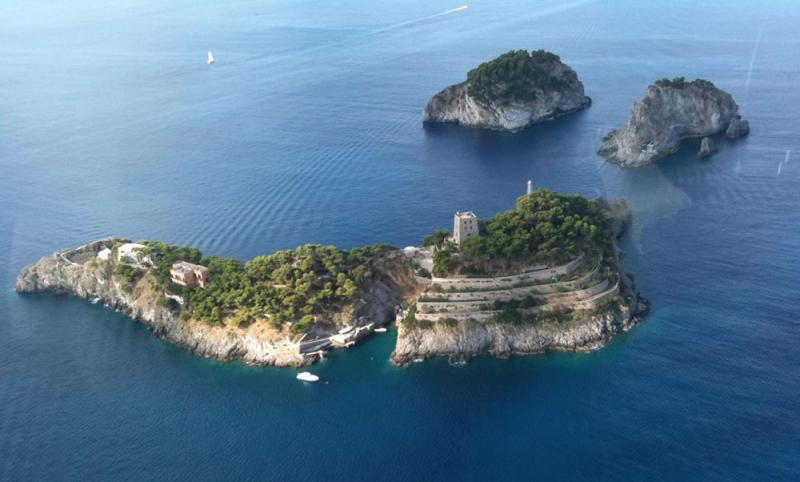Off the Amalfi Coast, the Li Galli Islands Still Hold Their Luring Power
ITA:

Use player to listen to Italian version
Between Capri and Positano, there is an archipelago of three islands known as Li Galli; privately owned, they can be admired on a boat tour, and, who knows, if you listen closely, you may still hear the call of sirens…
According to legend, the three islands forming the archipelago, Gallo Lungo, La Castelluccia, and La Rotonda, were once home to sirens; in fact, Li Galli is also known as Le Sirenuse (from ‘sirena’ in Italian). In Greek mythology, sirens represented the obstacles and dangers of sailing and they were depicted as half women and half birds (not fish). The strong currents in this stretch of sea often caused boats to crash against the rocks of the islands (although legend attributed the wrecks to the sirens' singing distracting the sailors). The sirens of Le Sirenuse are mentioned as early as the 1st century BC by Greek geographer Strabo.
Originally the site of an ancient Roman anchorage, in the Middle Ages the islands became medieval fiefdoms of emperor Frederick II.
In 1919, the Russian choreographer and dancer Leonide Massine purchased Gallo Lungo; he converted the old Aragonese Tower into a residence with a dance studio and an open-air theater. His architect friend Le Corbusier helped him build a villa on the site of the original Roman structure. After Massine’s death, the islands were purchased in 1988 by Russian dancer Rudolf Nureyev, who spent the last years of his life there. After Nureyev’s death, the islands were purchased by Giovanni Russo, a Sorrento hotelier who rents the seven-suite villa only for three weeks each season, from May through October. Through the years, many celebrities have checked into this exclusive retreat.
The property has been on and off the market for years; the most recent public listing of the three islands dates from 2011 and the asking price was €195M.
Tra Capri e Positano, c'è un arcipelago di tre isole noto come Li Galli; di proprietà privata, possono essere ammirate facendo un tour in barca e, chi lo sa, se si ascolta attentamente, magari si può ancora sentire il canto delle sirene ...
Secondo la leggenda, le tre isole che formano l'arcipelago, Gallo Lungo, La Castelluccia e La Rotonda, erano in passato abitate da sirene; in effetti, Li Galli è noto anche come Le Sirenuse. Nella mitologia greca, le sirene rappresentavano gli ostacoli e i pericoli della navigazione ed erano raffigurate come metà donne e metà uccelli (non pesci). Le forti correnti in questo tratto di mare spesso portavano le imbarcazioni a schiantarsi contro gli scogli delle isole (anche se per la leggenda erano i canti delle sirene a distrarre i marinai e provocare così i naufragi). Le sirene di Le Sirenuse erano già menzionate nel I° secolo aC dal geografo greco Strabo.
Originariamente il sito di un antico ancoraggio romano, nel Medioevo le isole divennero feudi medievali dell'imperatore Federico II.
Nel 1919, il coreografo russo e ballerino Leonide Massine acquistò Gallo Lungo; convertì poi la vecchia Torre Aragonese in una residenza con uno studio di danza e un teatro all'aperto. Il suo amico architetto Le Corbusier lo aiutò a costruire una villa sul luogo dell'originale struttura romana. Dopo la morte di Massine, le isole furono acquistate nel 1988 dal ballerino russo Rudolf Nureyev, che lì trascorse gli ultimi anni della sua vita. Dopo la morte di Nureyev, le isole furono acquistate da Giovanni Russo, un albergatore di Sorrento che affitta le sette suite della villa solo per tre settimane ogni stagione, da maggio a ottobre. Negli anni, molti personaggi famosi hanno soggiornato in questo rifugio esclusivo.
La villa e le isole sono state messe in vendita diverse volte nel corso degli ultimi anni; l’ultimo annuncio pubblico risale al 2011 quando il prezzo di vendita era di 195 milioni di euro.











